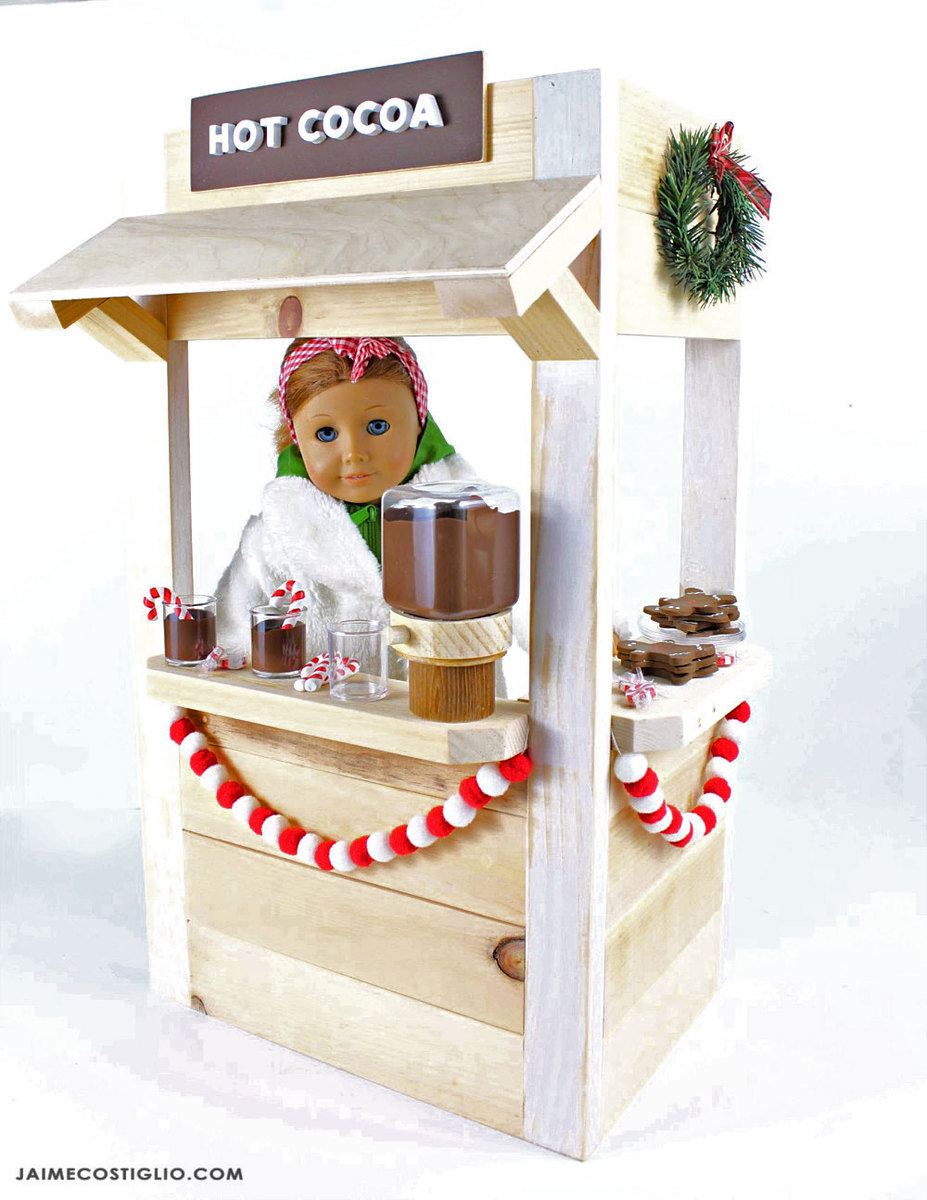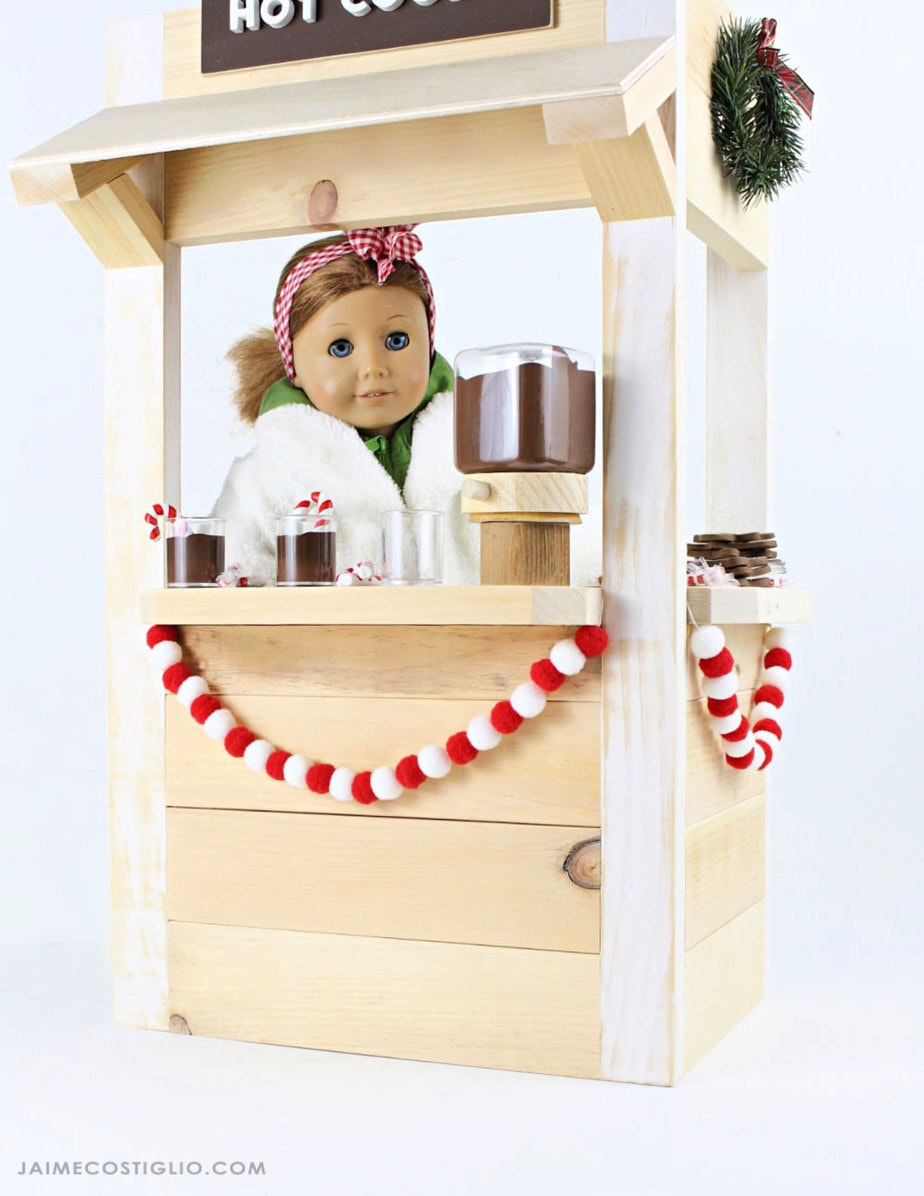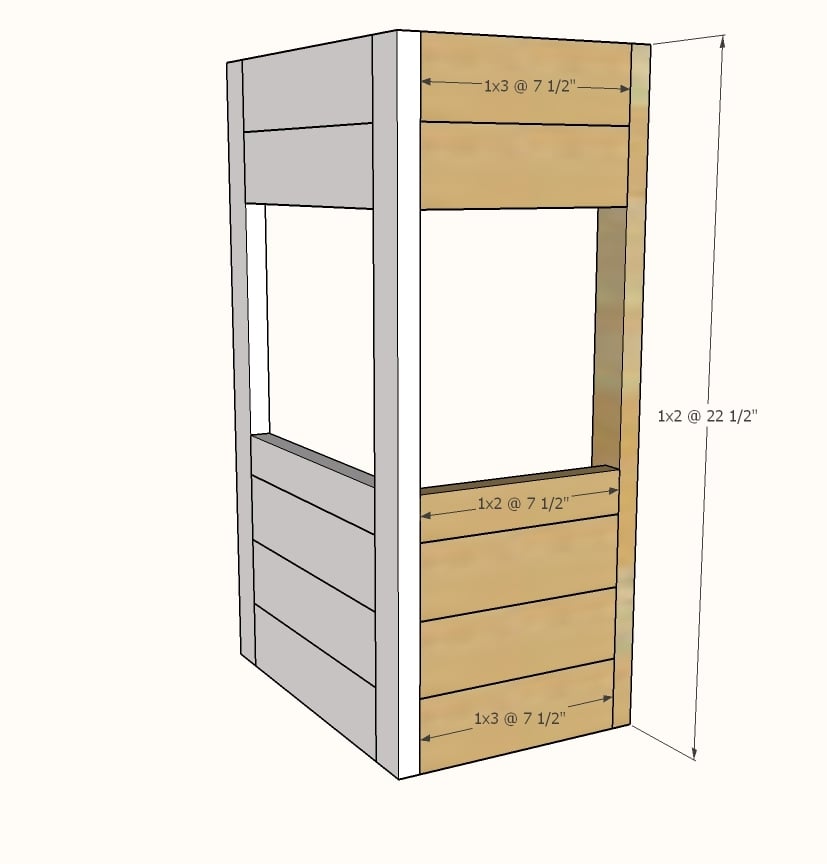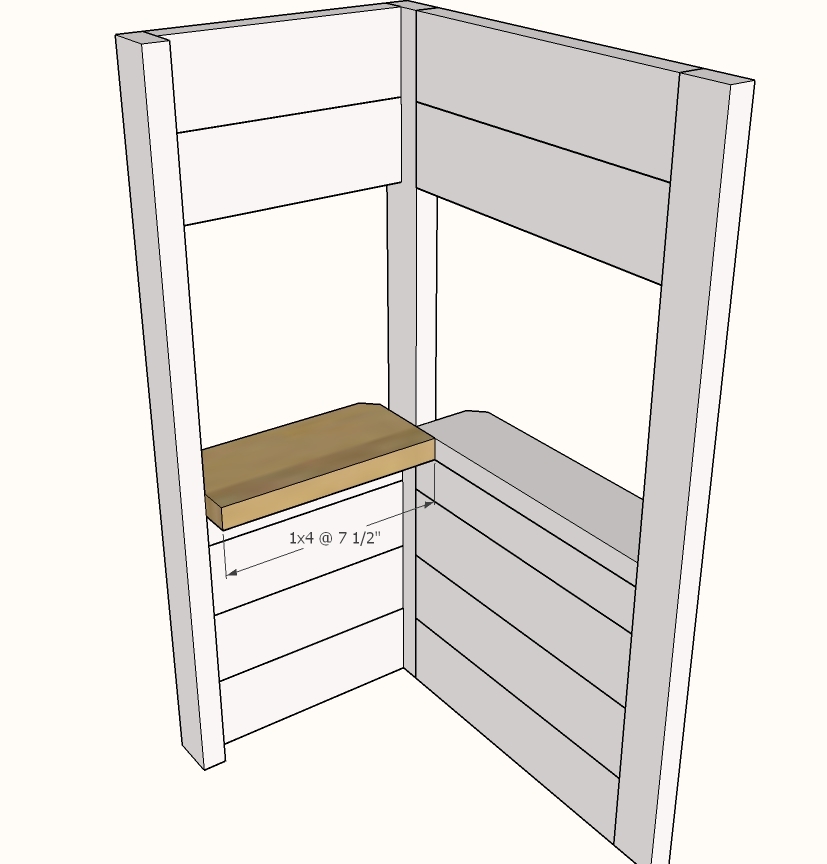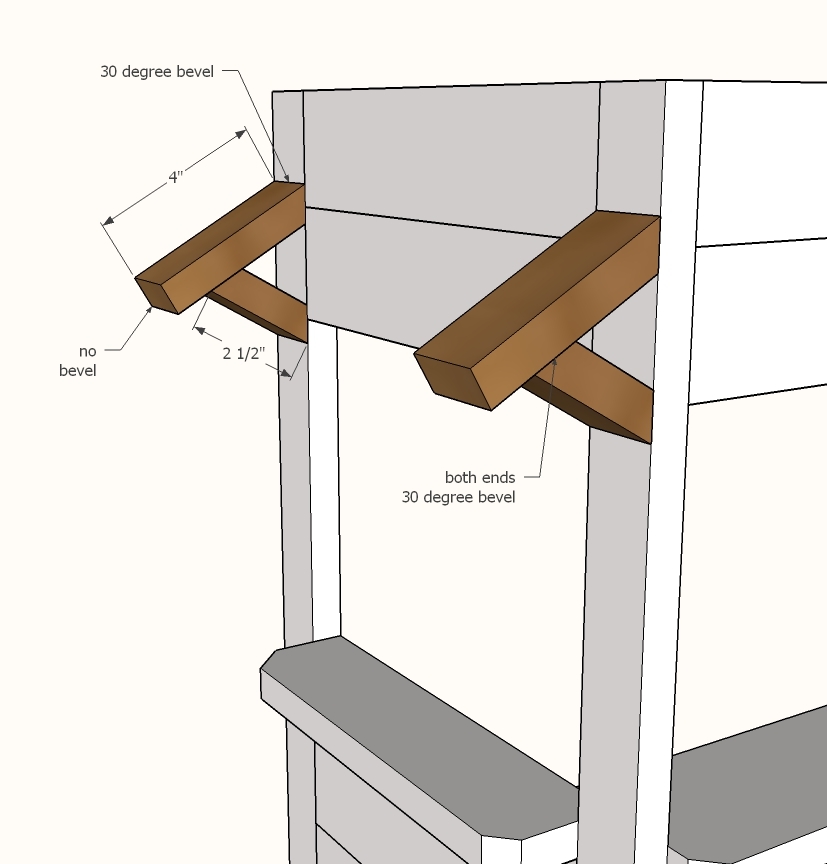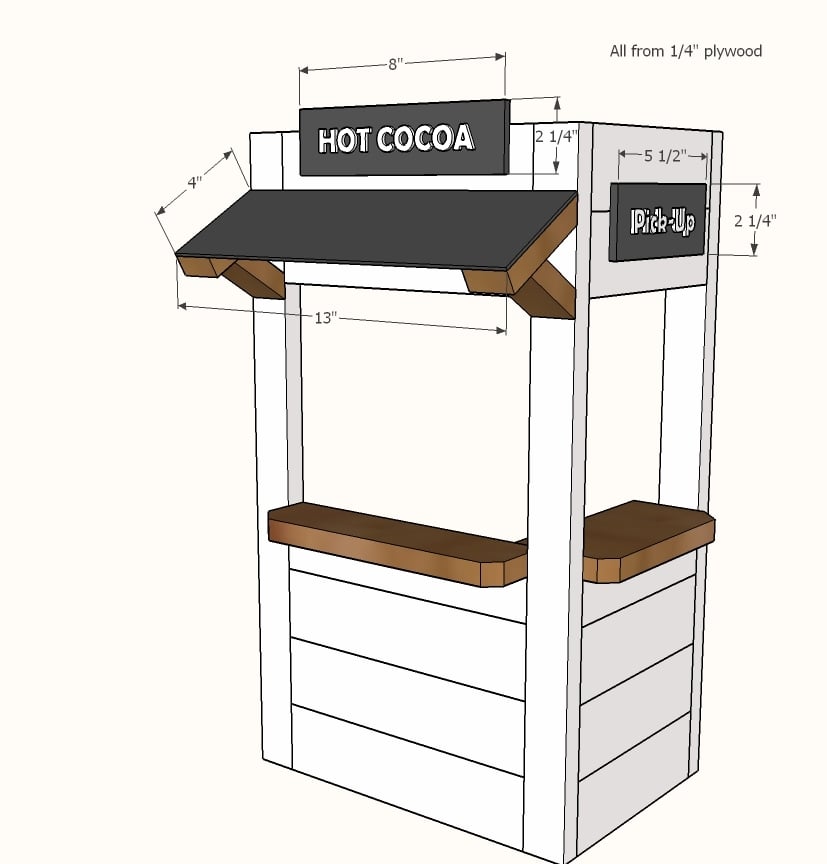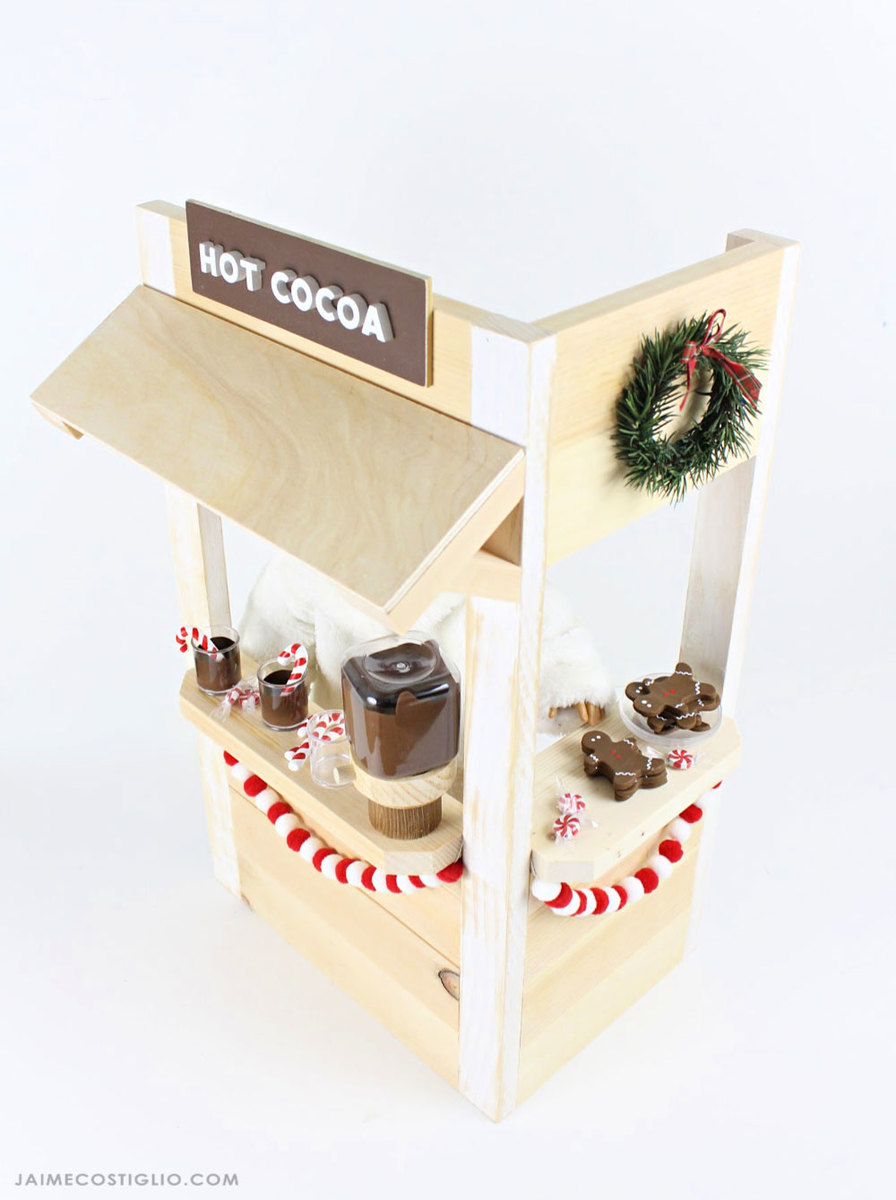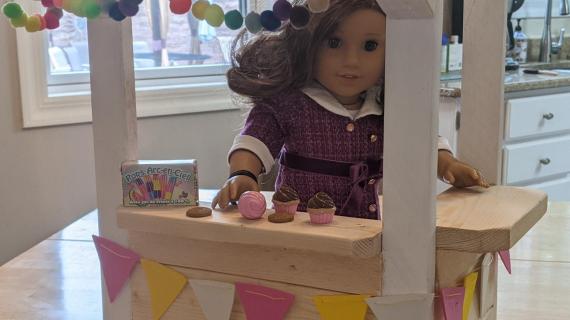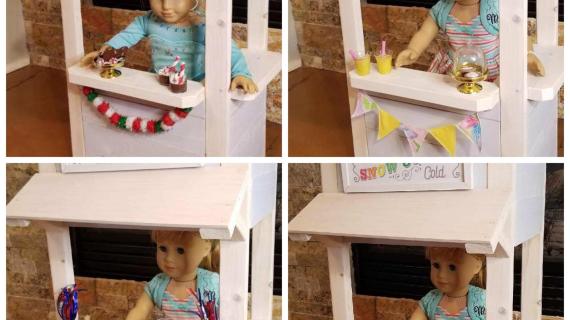
For less than $10 you can build this American Girl or My Life Doll Beverage Stand! Free plans by ANA-WHITE.com
Pin For Later!
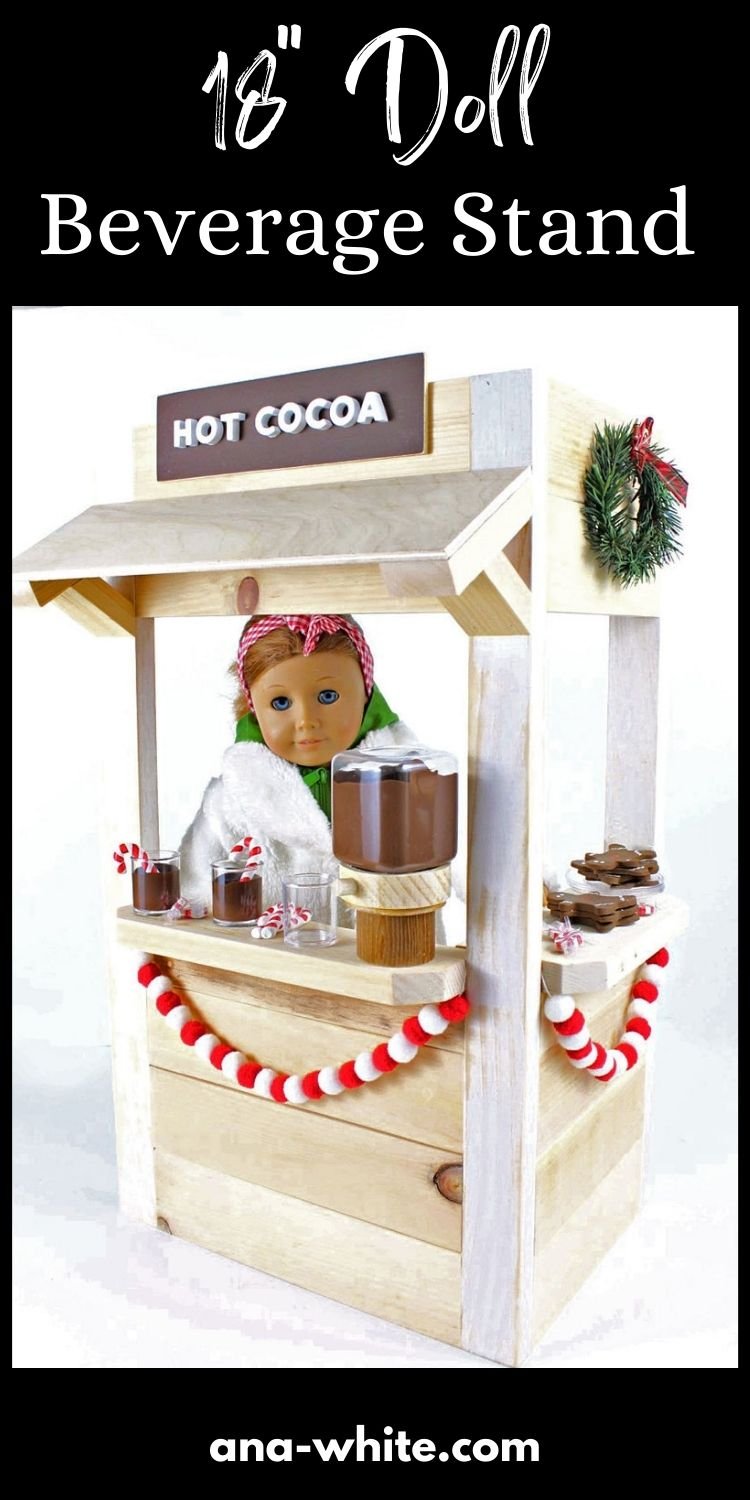
Dimensions
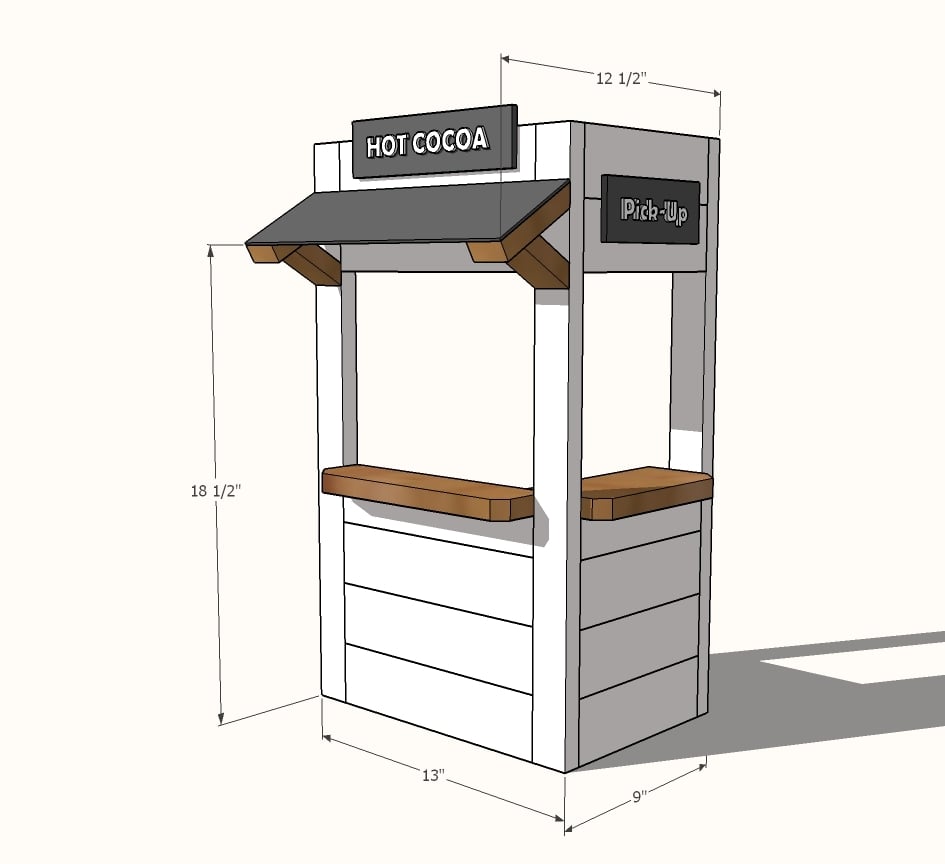
Dimensions shown above. Suitable for 18" dolls - My Life, American Girl, Gotz etc
Preparation
Shopping List
- 1x2 - about 8 feet of scraps
- 1x3 - about 8 feet of scraps
- 1x4 - about 8" of scraps
- 1/4" plywood scraps (for signs and awnings)
Common Materials
Cut List
WHEN CUTTING LITTLE PIECES, CUT FROM A LARGER PIECE WITH HANDS A SAFE DISTANCE FROM SAW BLADE, ESPECIALLY THE BEVEL CUTS
- 3 - 1x2 @ 22-1/2"
- 6 - 1x3 @ 10"
- 1 - 1x2 @ 10"
- 5 - 1x3 @ 7-1/2"
- 1 - 1x2 @ 7-1/2"
- 1 - 1x4 @ 7-1/2"
- 2 - 1x2 @ 4" - one end cut at 30 degree bevel, long point measurement
- 2 - 1x2 @ 2-1/2" - both ends cut at 30 degree bevel, ends NOT parallel, long point to long point measurement
Instructions
Step 1
Step 2
Step 3
Step 4
Step 6
Step 7
Project Type
Room
Seasonal And Holiday


